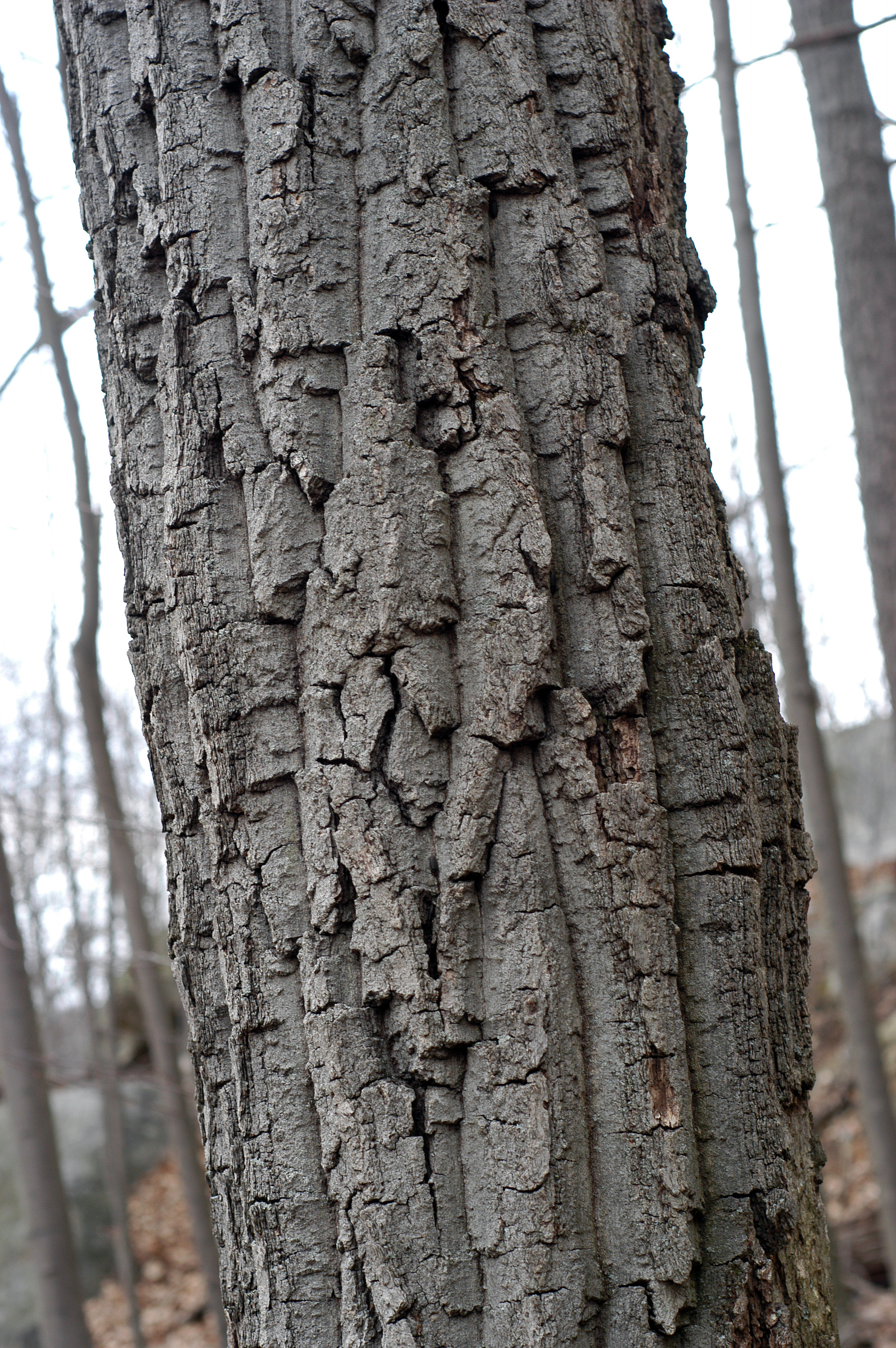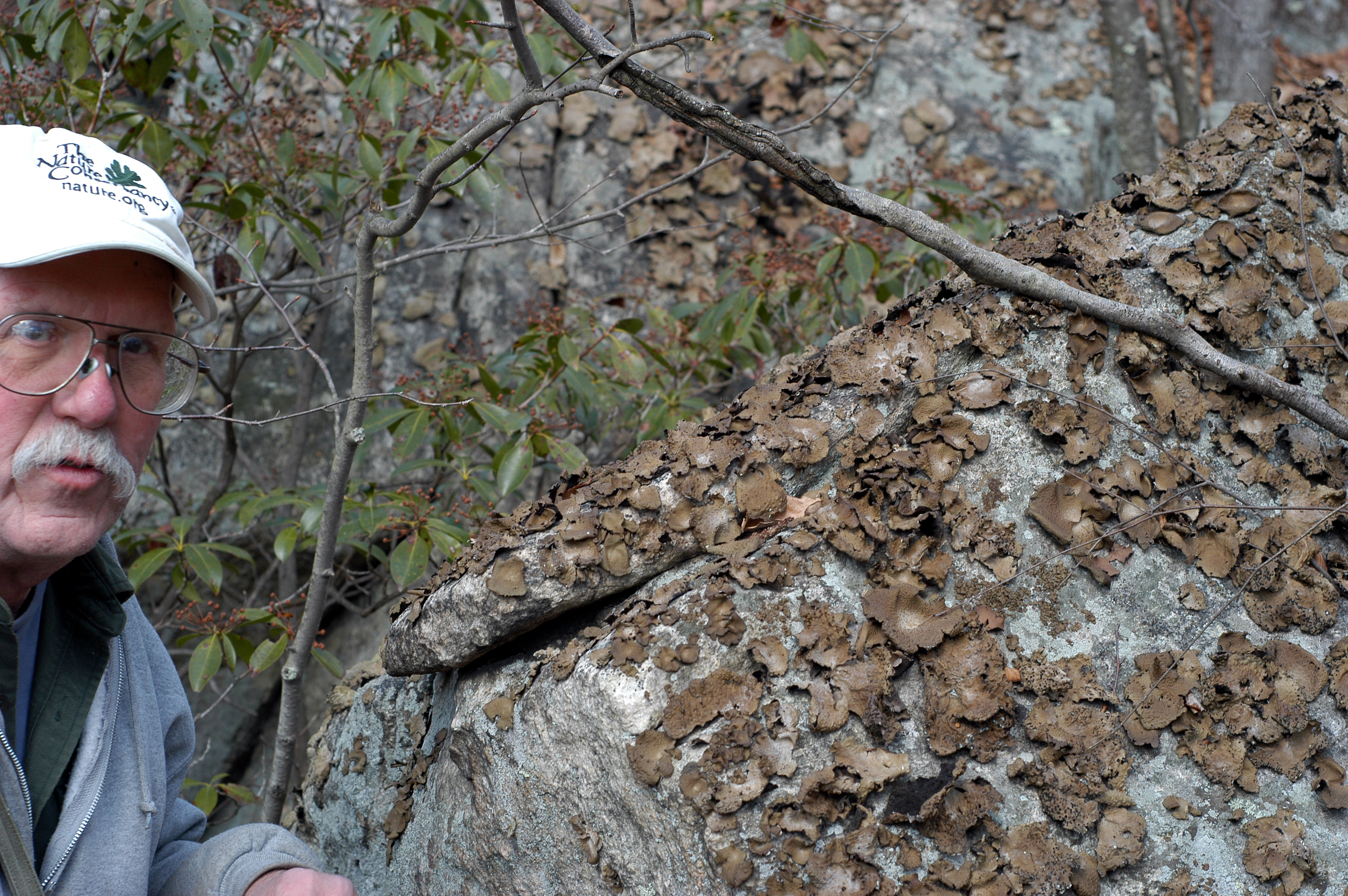|
Habitats
Terrestrial
System. Forested Uplands Subsystem--
Chestnut oak forest community
|

|
|
|
Chestnut oak, Quercus prinus
|
|
Physical Setting: Chestnut oak forest is found on the
upper slopes of Ice Pond's three principal hills. On the summits
of the two highest, the forest grades into a dwarfed variant.
The best
example of this community at Ice Pond occurs in a crescent about
150 meters wide just below the summit of the highest hill
(excluding its eastern side), covering approximately 40,000
square meters and centered at approximately 41.450ºN,
73.618ºW and about 210–250 meters above sea level.
The
northeastern hill also has well-developed Chestnut oak forest
that forms a crescent around its summit. Here the forest covers
approximately 40,000 square meters centered at approximately
41.455ºN, 73.607ºW and 200–240 meters above sea
level.
The
upper slopes and summit of the southeastern hill is dominated by
chestnut oak, but here the forest is not as well-defined. It
occurs in an oblique circle centered at approximately 41.448ºN
and 73.611ºW and 170–190 meters above sea level and
covers approximately 31,000 square meters.
Substrate
and Hydrology: Chestnut oak
forests in general occur on moderate slopes on more basic, drier
soils. At Ice Pond, the forest occurs on thin soil with large
rock outcrops. The somewhat sparse canopy allows the ground to
dry quickly.
Biota: The
dominant tree species of the Chestnut oak forest community
is Quercus prinus L.
Lesser dominants include Quercus
velutina Lam., Quercus
rubra L., Betula
lenta L., Prunus
serotina Ehrh., Carya andSassafras
albidum (Nutt.) Nees. The
shrub layer is dominated by Hamamelis
virginiana L., Kalmia
latifolia L.,Vaccinium
pallidum Aiton
and Gaylussacia
bacata (Wagenh.) K. Koch.
The herb layer is relatively depauperate and is dominated by
either Carex
pensylvanica Lam. or the
moss, Leucobryum
albidum (Brid. ex P.
Beauv.) Lindb. The very distinctive lichens, Lasallia
papulosa (Ach.) Llano
and Umbilicaria
mammulata (Ach.) Tuck.,
(both pictured below right) are abundant on large boulders on the
western slope of the highest hill.
|
 |
|
Lichenologist Richard
Harris with Lasallia papulosa and Umbilicaria
mammulata
|
Cultural: These
forests occur on relatively steep, rocky slopes with poor soil.
There are few stone walls in this community, suggesting that
these slopes may have only been marginally cultivated.
Specimen
List
|